Publications so far
0
| 1. | 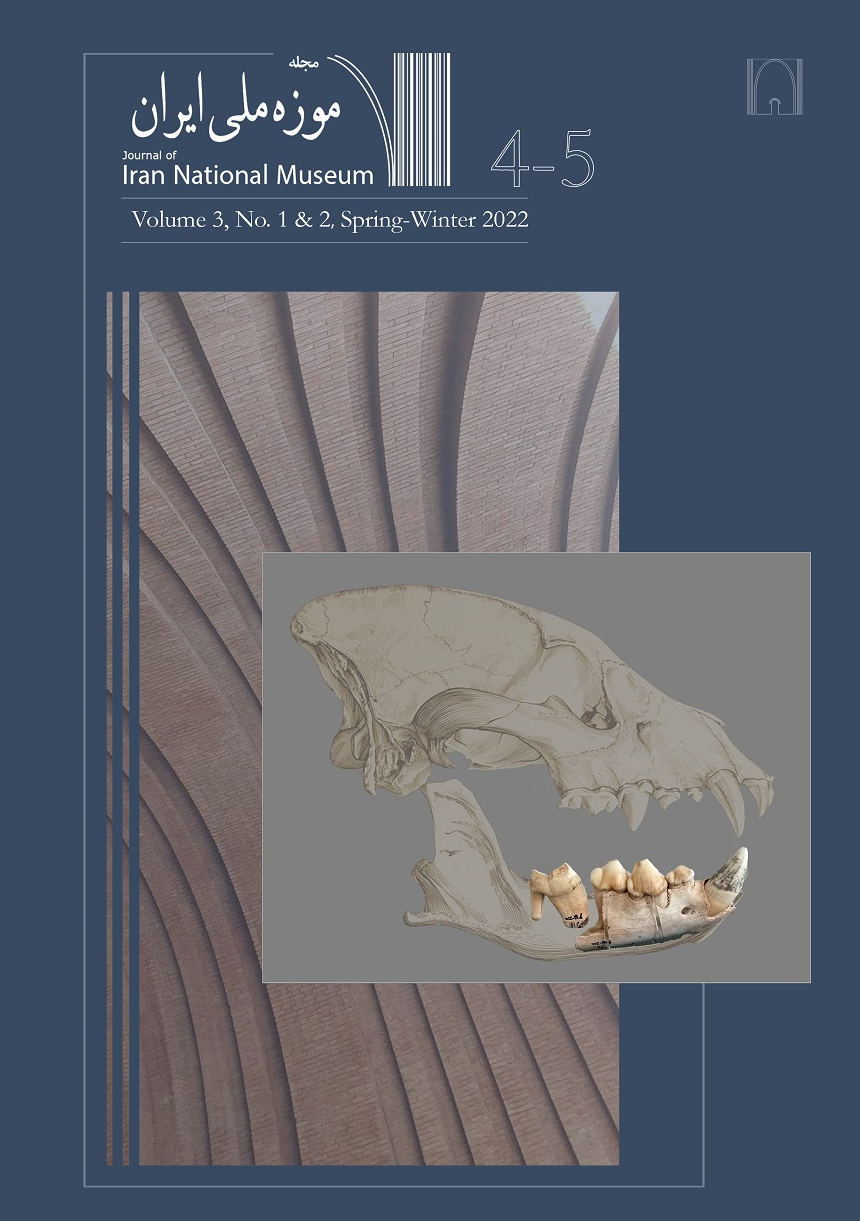 | Ohrstrom, Lena; Kashani, Natascha Bagherpour; Seilera, Roger; Bode, Beata; Aali, Abolfazl; Soltani, Sara Khalifeh; Shirani, Shapour; Ruß-Popa, Gabriela; Stöllner, Thomas; Rühli, Frank: Paleopathological assessment of the ancient Iranian salt mummies #1, #7 and #X, Chehrābād salt mine of Douzlākh, Iran. In: Journal of Iran National Museum, vol. 3, iss. 1, no. 4, pp. 181-188, 2025. (Type: Journal Article | Abstract | Links | BibTeX)@article{nokey,A paleopathological assessment of the ancient human remains from the Salt mine of Douzlakh, which are kept in the National museum in Tehran, Iran. The ancient human remains were investigated by Computed Tomography (CT) as well as by histology. Molecular analyses are still ongoing. The analyses showed that the tissues have been very well conserved in the natural salt. Traumatic lesions can be identified by CT, as a result of the massive force which was put on the individuals during the collapses of the mine. |
| 2. | 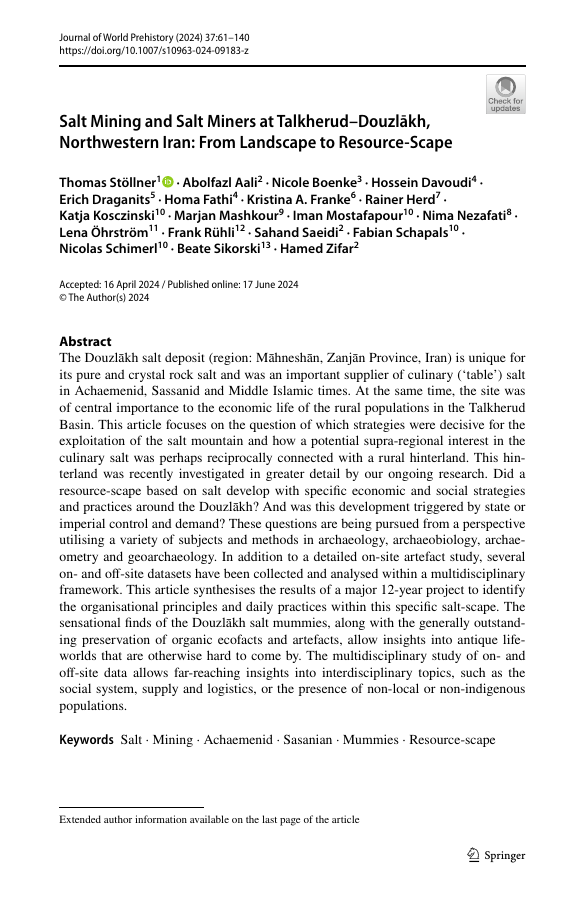 | Stöllner, Thomas; Aali, Abolfazl; Boenke, Nicole; Davoudi, Hossein; Draganits, Erich; Fathi, Homa; Franke, Kristina A.; Herd, Rainer; Kosczinski, Katja; Mashkour, Marjan; Mostafapour, Iman; Nezafati, Nima; Öhrström, Lena Maria; Rühli, Frank; Saeidi, Sahand; Schapals, Fabian; Schimerl, Nicolas; Sikorski, Beate; Zifar, Hamed: Salt Mining and Salt Miners at Talkherud–Douzlākh, Northwestern Iran: From Landscape to Resource‑Scape. In: Journal of World Prehistory, vol. 37, pp. 61-140, 2024. (Type: Journal Article | Abstract | Links | BibTeX)@article{nokey,The Douzlākh salt deposit (region: Māhneshān, Zanjān Province, Iran) is unique for its pure and crystal rock salt and was an important supplier of culinary (‘table’) salt in Achaemenid, Sassanid and Middle Islamic times. At the same time, the site was of central importance to the economic life of the rural populations in the Talkherud Basin. This article focuses on the question of which strategies were decisive for the exploitation of the salt mountain and how a potential supra-regional interest in the culinary salt was perhaps reciprocally connected with a rural hinterland. This hinterland was recently investigated in greater detail by our ongoing research. Did aresource-scape based on salt develop with specific economic and social strategies and practices around the Douzlākh? And was this development triggered by state or imperial control and demand? These questions are being pursued from a perspective utilising a variety of subjects and methods in archaeology, archaeobiology, archaeometry and geoarchaeology. In addition to a detailed on-site artefact study, several on- and off-site datasets have been collected and analysed within a multidisciplinary framework. This article synthesises the results of a major 12-year project to identify the organisational principles and daily practices within this specific salt-scape. The sensational finds of the Douzlākh salt mummies, along with the generally outstanding preservation of organic ecofacts and artefacts, allow insights into antique life-worlds that are otherwise hard to come by. The multidisciplinary study of on- and off-site data allows far-reaching insights into interdisciplinary topics, such as the social system, supply and logistics, or the presence of non-local or non-indigenous populations. |
| 3. | 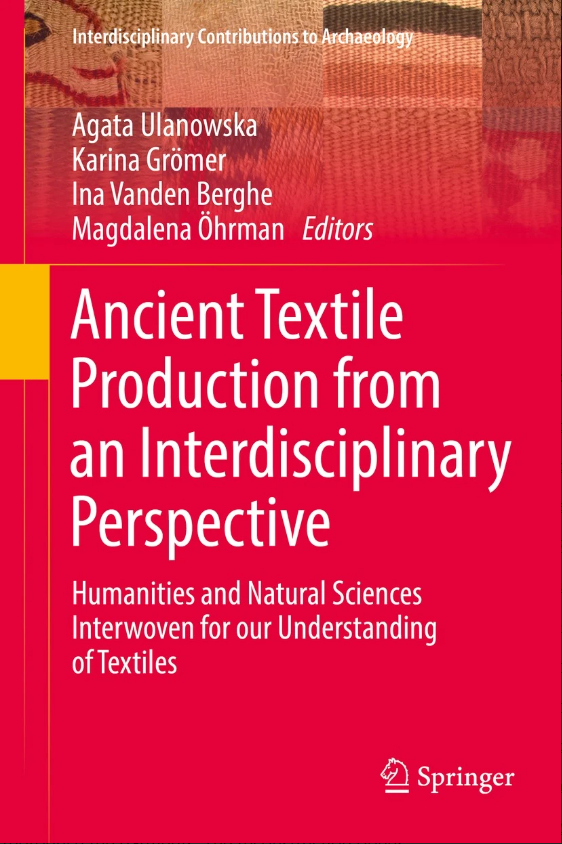 | Moskvin, Aleksei; Grömer, Karina; Moskvina, Mariia; Kuzmichev, Victor; Stöllner, Thomas; Aali, Abolfazl: 3D Visualization of the 2400-Year-Old Garments of Salt Man 4 from Chehrābād, Iran.. In: Ulanowska, Agata; Grömer, Karina; Berghe, Ina Vanden; Öhrman, Magdalena (Ed.): Ancient Textile Production from an Interdisciplinary Perspective, Springer, Cham, 2022, ISBN: 978-3-030-92170-5. (Type: Book Chapter | Links | BibTeX)@inbook{nokey, |
| 4. | 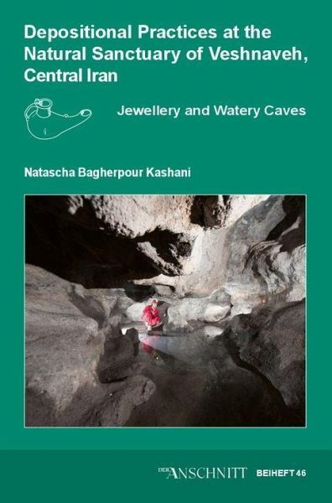 | Kashani, Natascha Bagherpour: Depositional Practices at the Natural Sanctuary of Veshnaveh, Central Iran: Jewellery and Watery Caves. Verlag Marie Leidorf, Rahden/Westfalen, 2022. (Type: Book | Abstract | Links | BibTeX)@book{nokey,The mining archaeological excavations in Veshnaveh were among the first systematic of their kind in Iran. This is surprising, since the site itself had been known and described since the 1970s, but could not be investigated thoroughly until the early 2000s. The joint Iranian-German research in Veshnaveh was carried out as a part of the “Early Min- ing and Metallurgy in West-Central Iran” project, which had been continued until 2005. In this context, the mining area of Veshnaveh was comprehensively researched and, for the first time, underground excavations and surveys were carried out in the vicinity of the mining area. During our research of the mining evidence, it was the more surprising to discover ritual re-use of a Bronze Age copper mine. The excavations from 2001 onwards made it immediately clear that these deposits were not part of mining debris as one would have expected for mining activities. The findings suggested a different con- text and it was clear that this was a special rural sanc- tuary of pre- and early Zoroastrian cults. |
| 5. |  | Stöllner, Thomas: Entangled Connections: Materialized Practices of Knowledge-Networks of Mining: From the Theoretical Level to its Empirical Consequences in Mining Archaeology.. In: Farrenkopf, Michael; Siemer, Stefan (Ed.): Materielle Kulturen des Bergbaus – Material Cultures of Mining: Zugänge, Aspekte und Beispiele – Approaches, Aspects and Examples, pp. 317-344, De Gruyter Oldenbourg, Berlin and Boston, 2022. (Type: Book Chapter | Links | BibTeX)@inbook{nokey, |
| 6. |  | Stöllner, Thomas; Aali, Abolfazl: Einblicke in eine Katastrophe. Das Salzbergwerk von Douzlākh bei Chehrābād. In: Karlsruhe, Badisches Landesmuseum (Ed.): vol. Die Perser. Am Hof der Großkönige, pp. 116-20, WBG/Philipp von Zabern, Darmstadt, 2021, ISBN: ISBN 978-3-8053-5276-5. (Type: Book Chapter | Links | BibTeX)@inbook{nokey, |
| 7. |  | Stöllner, Thomas; Nokandeh, Jebrael (Ed.): Human Search for Resources. Highlights of Ancient Mining from the German Mining Museum Bochum. 2021. (Type: Book | Abstract | Links | BibTeX)@book{nokey,“Human Search for Resources” is a joint exhibition between the German Mining Museum in Bochum and the National Museum of Iran. It seeks to follow the appropriation of humans to mineral resources and the development of the history of human experiences and achievements in mining, which led to the development of technologies, the formation of professions, trade and specialization of industries. More than 200 artefacts from different parts of the world will be shown, such as the findings of the Austrian salt mines or the relief of Linares from Spain, each of which is a valuable symbol of human interaction with natural heritage. |
| 8. |  | Stöllner, Thomas; Aali, Abolfazl: Long-Term Salt Mining in Chehrābād: Resilient Strategies in Accessing Mineral Resources at the Iranian Highlands. In: Pearls, Politics and Pistachios: Essays in Anthropology and Memories on the Occasion of Susan Pollock’s 65th Birthday, pp. 352-369, Ex Oriente/Propylaeum, Berlin/Heidelberg, 2021. (Type: Book Chapter | Links | BibTeX)@inbook{nokey, |
| 9. |  | Öhrström, Lena Maria; Marquez, Herman; Seiler, Roger; Bode, Beata; Aali, Abolfazl; Stöllner, Thomas; Rühli, Frank Jakobus: Radiological and Histological Findings in Ancient Salt Mummies From the Salt Mine of DouzlāKh, Iran. In: PLoS ONE, iss. 16, no. 4, 2021. (Type: Journal Article | Abstract | Links | BibTeX)@article{nokey,Computed tomography studies and histological analyses were performed on the mummified remains found in the Chehrābād salt mine in northwestern Iran. The ancient salt mummies are dated to the Achaemenid (550–330 BC) and Sassanid (3rd–7th century AD) time period and died in mining incidents. The aim of the study was to describe the radiological and histological findings of several ancient Iranian salt mummies with special interest in pathological and postmortem changes. The mummified remains show multiple traumatic alterations, such as fractures and signs of massive compression. Histological analyses can clearly differentiate soft tissue, however the preservation status is variable. These Iranian salt mummies are a rare example of the ancient Iranian population. The soft tissue and organs are well preserved, however in different degrees due to the varying conditions. |
| 10. | 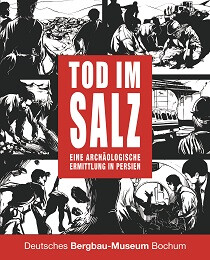 | Stöllner, Thomas; Aali, Abolfazl; Kashani, Natascha Bagherpour (Ed.): Tod im Salz. Eine archäologische Ermittlung in Persien. Nünnerich-Asmus Verlag & Media GmbH, 2020, ISBN: 978-3-96176-141-8. (Type: Book | Abstract | Links | BibTeX)@book{nokey,Since the first discoveries in 1993 bodies or body-parts of eight humans have been discovered at the salt-mine of Douzlākh at Chehrābād. These bodies allow a reconstruction of their lives as workers during the different operation periods. By involving many different scientific fields, it became possible to investigate their palaeo-medical aspects, their diet and their health status as well the causes of their death and their involvement into different aspects of the mining operation and logistics of the mine. It is possible not only to reconstruct three different catastrophes during the Achaemenid, the early and the late Sasanian times but also to understand the social aspects of the working people. The Achaemenid miners certainly came from abroad but already stayed a while in the region, apart from the young miner no. 4 who seems to have arrived shortly before the catastrophe. This group of migrants possibly were sent within a “bandaka”, an Achaemenid labour duty. The Sassanian miners partly came from a “regional” background but also came shortly before their deaths. Saltman 1 is interesting as he is an older individual who possibly had a special role within the miners. Mining at Douzlakh was predominantly operated in periods of strong centralized political systems when governmental activities could be organized over longer distances. |
| 11. | 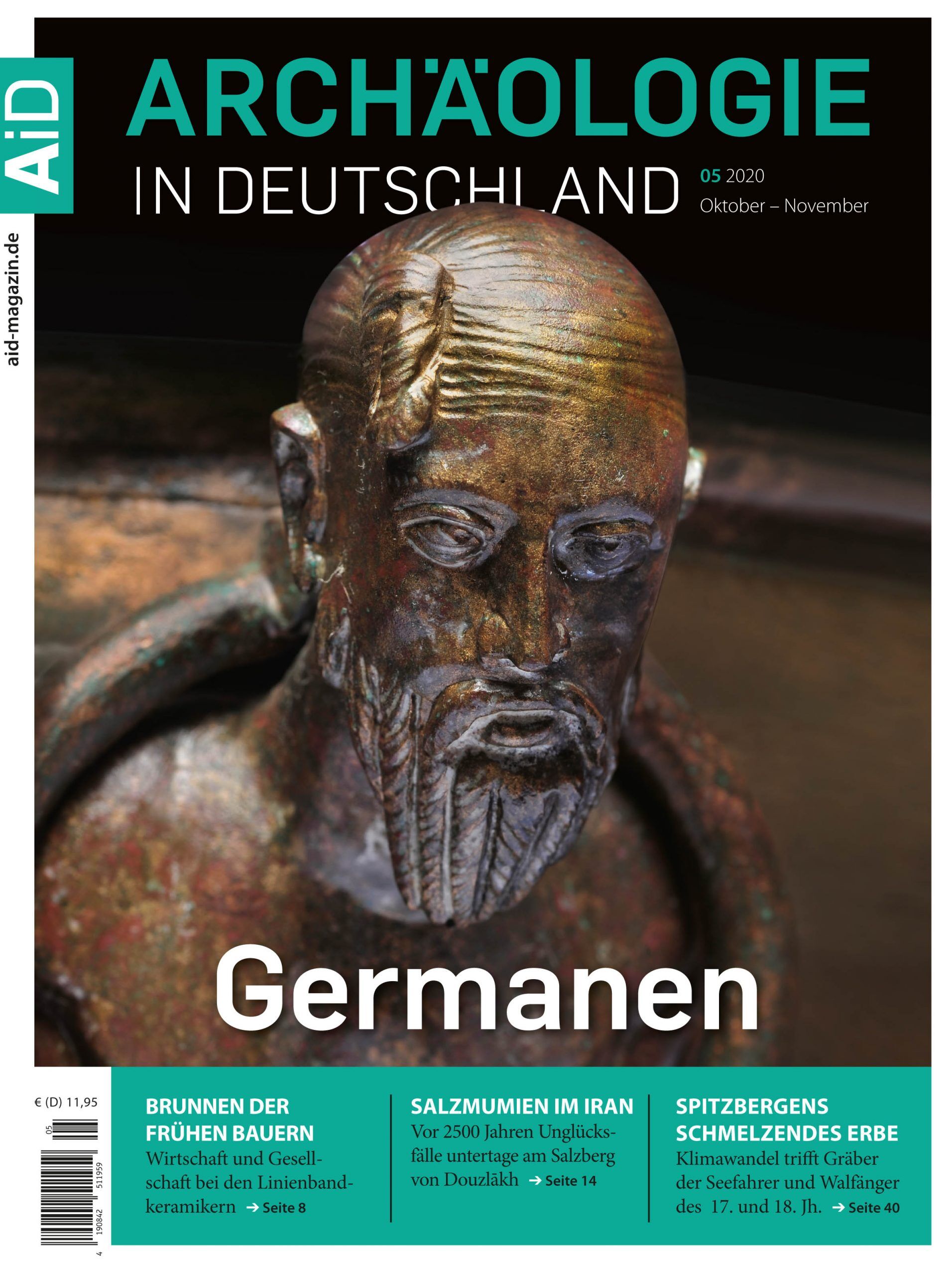 | Stöllner, Thomas: Salzmumien im Iran. In: Archäologie in Deutschland, vol. 5/2020, pp. 14-19, 2020. (Type: Journal Article | Abstract | Links | BibTeX)@article{nokey,Salz ist unverzichtbar: als Mittel zur Konservierung in der Vergangenheit in noch weit höherem Maße als heute. Von der Bedeutung des weißen Goldes zeugen in unseren Breiten berühmte Fundorte wie Hallstatt und Hallein. Im Nordwesten Persiens liegen die Bergwerke von Douzlākh. Dort hat das Salz verunglückte Bergmänner konserviert: eine Momentaufnahme vom Todeskampf untertage. |
| 12. |  | Aali, Abolfazl; Stöllner, Thomas; Firuzmandi, Bahman: Analyzing Archaeological Finds from the Chehrabad Salt Mine. In: Journal of Archaeological Studies, vol. 11, no. 2, pp. 191-210, 2019. (Type: Journal Article | Abstract | Links | BibTeX)@article{nokey,The Chehrabad salt mine is one of the rare ancient salt mine in the world and the only identified salt mine in Iran which has evidences of salt extracting over a long time span from 500 BC to modern times. According to the field researches conducted so far, in the excavated area, mining activities are proven to be in use in the Achaemenid, Sasanian, Middle and Late Islamic periods. After the accidental discoveries in 1993 and 2004, several season of excavation and archaeological surveys, have been carried out in the mine and around it. Archaeological researches brought to light interesting results concerning the techniques, periods and extracting tools, also relation between salt mine and the archaeological sites around it. Digging deep tunnels inside the salt rock deposits in different dimensions and sizes and using the various extraction tools can be seen in the excavated area with the difference in details in all the aforementioned periods. The long- term salt extraction activities and multi- periodic collapse of the tunnels, have resulted the formation of various layers such as fall, occupation, mining and erosion layers in different parts of the mine and the filling many of its old tunnels. According to documents, Most of the discovered human remains were probably non- native miners who died during catastrophic mining accidents and mummified naturally. |
| 13. | 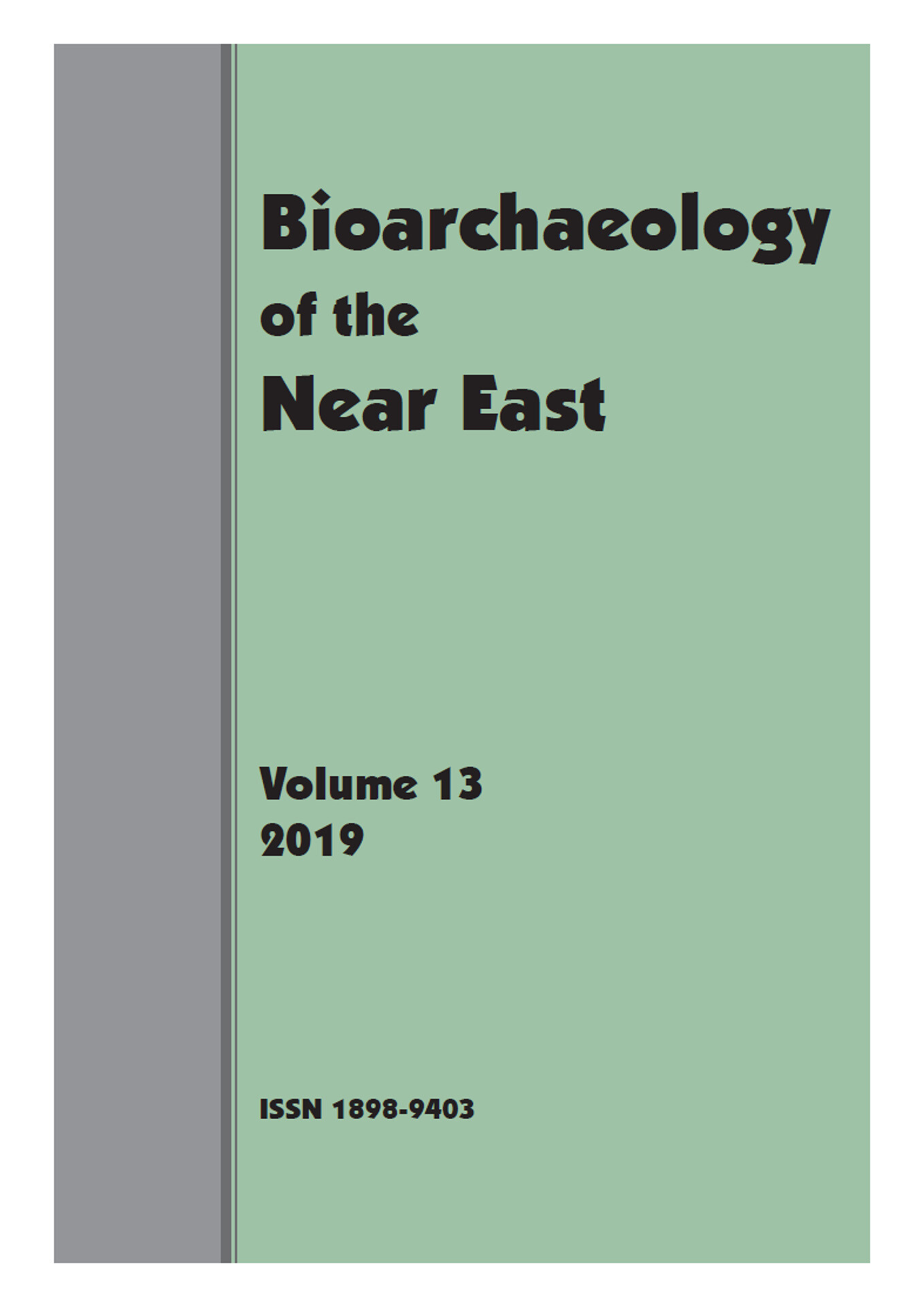 | Nasab, Hamed Vahdati; Aali, Abolfazl; Kazzazi, Mandan; Pollard, Mark; Stöllner, Thomas: Reappraisal of the number of salt mummies identified in Chehrābād Salt Mine, Zanjan, Iran. In: Bioarchaeology of the Near East, vol. 13, pp. 23-47, 2019. (Type: Journal Article | Abstract | Links | BibTeX)@article{nokey,The Chehrābād Salt Mine mummies were first discovered in 1993. So far, six individuals have been identified in the mine. Three (1, 2, and 3) were found accidentally by miners, while another three (4, 5, and 6) were discovered through systematic archaeological excavations. This article shows that there are two more individuals represented in the collection, bringing the total number of mummies to eight. Osteological examination confirms that the extra bones initially placed with Salt Man 1 belong to another individual, possibly a young adult male, of unknown date, called Salt Man 7. In addition, results from AMS dating of an extra piece of mandible, which was originally placed with the skeletal remains of Salt Man 3, indicates that this specimen does not belong to this individual; it was removed from the collection and renamed as Salt Man 8. The osteological analysis of the bone remains of Salt Man 8 suggests that this individual might also be a young male. |
| 14. | 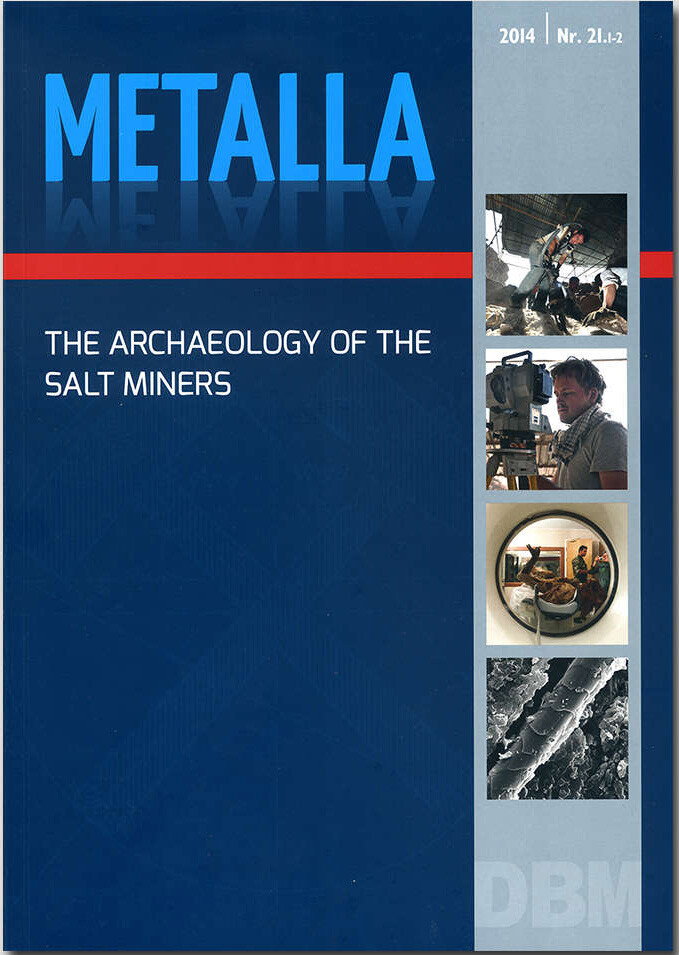 | Aali, Abolfazl; Stöllner, Thomas (Ed.): The Archaeology of the Salt Miners. Interdisciplinary Research 2010-2014.. 2015, ISSN: 0947-6229. (Type: Book | Links | BibTeX)@book{nokey, |
| 15. | Aali, Abolfazl; Stöllner, Thomas; Abar, Aydin; Rüli, Frank: The Salt Men of Iran: The salt mine of Douzlakh, Chehrabad. In: Archäologisches Korrespondenzblatt , iss. 42, no. 1, pp. 61-81, 2012. (Type: Journal Article | Abstract | Links | BibTeX)@article{nokey,During 2004, 2005, and 2010 scientific excavations took place at the salt mine of Chehrābād. According to the work conducted and further scientific investigations, the beginning of salt exploitation dates to the mid-first millennium BC. Some indications possibly hint to mining activities during the Late Arsacid period. Salt extraction certainly was taken up again during the Sassanian period and might have continued up to the Early Islamic period. The extraction was carried out as a chamber-pillar mining; no wooden props have been found so far, although the mummified bodies of mine workers and the context bear ample witness of instabilities and mining catastrophes. The first two campaigns were conducted by the Iranian Cultural Heritage Organization/Miras Farhangi under the auspices of Abolfazl Aali. The excavation in 2010 laid the basis for the establishment of a multinational group of scientists, comprising research facilities in Iran, Germany, Great Britain, France, and Switzerland. | |
| 16. | Amini, Sarem: Investigations at "Chakherbaz Holes", Kurdistan, Iran: A Possible Ancient Mining/Metallurgical Site. 2011. (Type: Working paper | Abstract | BibTeX)@workingpaper{nokey,The "Chakherbaz suspected Hole" in western Iran, Kurdistan, was investigated to unravel its mystery of origin. This led to the discovery of some materials, including metal-bearing slag fragments and some partially oxidized iron grains within the soils covering the inside and outside surfaces of the hole which indicate possible metallurgical or smithing practices at the site. The nature of the slag materials found suggest iron smelting; although indications of copper mineralization and the presence of chalcopyrite grains within the slag fragments equally present evidences for copper metallurgy. This seems to have implications for the origin of the holes which are thought to be abandoned surface mines. This notion is further supported by the discovery of pottery in the fill materials and lithics suspected to be ancient stone mining tools. | |
| 17. | Nezafati, Nima; Herzig, P. M.; Pernicka, Ernst; Momenzadeh, Morteza: Intrusion-related gold occurrences in the Astaneh-Sarband area, west central Iran. In: Mao, J.; Bierlein, F. P. (Ed.): Mineral Deposit Research: Meeting the Global Challenge
, pp. 445-448, Springer, 2005. (Type: Book Chapter | Abstract | Links | BibTeX)@inbook{nokey,The Astaneh-Sarband area is located in the Sanandaj-Sirjan metamorphic belt in west central Iran. The area hosts five intrusion-related tungsten and/or gold systems, including the Deh Hosein and Astaneh, gold occurrences and Nezam Abad tungsten-gold occurrence. The Astaneh-Sarband area contains Mesozoic schist, Late Cretaceous-Early Tertiary intrusive rocks and related contact metamorphic aureoles, and pegmatites. The Astaneh and Nezam Abad systems are hosted in granitic to grnaodioritic intrusive rocks of Early to Late Eocene age. At Deh Hosein, mineralization occurs, mainly in Jurassic-Triassic meta-sedimentary rocks which have undergone greenschist facies metamorphism and intrusion by the Astaneh granite-granodiorite complex. Gold occurs in quartz and quartz-sulfide veins and veinlets, and as disseminations. Major ore minerals are arsenopyrite, chalcopyrite, pyrrhotite, sphalerite, marcasite, bismite, native gold, and rare stannite. Adjacent to and within zones of intense quartz veining the predominant alteration assemblage is quartz + sericite + tourmaline + chlorite. The sulfide mineral content in the veins is generally less than 3 vol.%. The gold contents of samples from Deh Hosein, Astaneh and Nezam Abad range up to 9.5, 13.3, and 36.2 ppm respectively. Gold contents correlate moderately well with As, Bi, and Se. Arsenopyrite geothermometry, yields deposition temperatures of 580° to 380°C for these occurrences. Stable-isotope data include ´18O values of 11.5 to 19.2 (quartz), and δ34S values of −5.6 to 4 (galena, pyrite, arsenopyrite, chalcopyrite). The sulfur data are compatible with a magmatic fluid source. Lead isotope results are consistent with a lower crustal source for the ores at Deh Hosein. KeywordsIntrusion-related gold–Deh Hosein–Iran | |
| 18. | Momenzadeh, Morteza: Mining Archaeology in iran I: An ancient gold mining site of Zartorosht (SW-Jiroft, SE-Iran). In: Metalla, vol. 9, no. 1, pp. 47-53, 2002. (Type: Journal Article | Links | BibTeX)@article{nokey, | |
| 19. | Weisgerber, Gerd; Kroll, Stephan; Gropp, Gerd; Hauptmann, Andreas: Das Bergbaurevier von Sungun bei Kighal in Azarbaidjan (Iran). In: Archäologische Mitteilungen aus Iran, vol. 23, pp. 85-103, 1990. (Type: Journal Article | Links | BibTeX)@article{nokey, | |
| 20. | Weisgerber, Gerd: Montanarchäologische Forschungen in Nordwest-Iran. In: Archäologische Mitteilungen aus Iran, vol. 23, pp. 73-84, 1990. (Type: Journal Article | BibTeX)@article{nokey, |
2025 |
|
 | Ohrstrom, Lena; Kashani, Natascha Bagherpour; Seilera, Roger; Bode, Beata; Aali, Abolfazl; Soltani, Sara Khalifeh; Shirani, Shapour; Ruß-Popa, Gabriela; Stöllner, Thomas; Rühli, Frank: Paleopathological assessment of the ancient Iranian salt mummies #1, #7 and #X, Chehrābād salt mine of Douzlākh, Iran. In: Journal of Iran National Museum, vol. 3, iss. 1, no. 4, pp. 181-188, 2025. (Type: Journal Article | Abstract | Links | BibTeX | Tags: Mining, Salt)@article{nokey,A paleopathological assessment of the ancient human remains from the Salt mine of Douzlakh, which are kept in the National museum in Tehran, Iran. The ancient human remains were investigated by Computed Tomography (CT) as well as by histology. Molecular analyses are still ongoing. The analyses showed that the tissues have been very well conserved in the natural salt. Traumatic lesions can be identified by CT, as a result of the massive force which was put on the individuals during the collapses of the mine. |
2024 |
|
 | Stöllner, Thomas; Aali, Abolfazl; Boenke, Nicole; Davoudi, Hossein; Draganits, Erich; Fathi, Homa; Franke, Kristina A.; Herd, Rainer; Kosczinski, Katja; Mashkour, Marjan; Mostafapour, Iman; Nezafati, Nima; Öhrström, Lena Maria; Rühli, Frank; Saeidi, Sahand; Schapals, Fabian; Schimerl, Nicolas; Sikorski, Beate; Zifar, Hamed: Salt Mining and Salt Miners at Talkherud–Douzlākh, Northwestern Iran: From Landscape to Resource‑Scape. In: Journal of World Prehistory, vol. 37, pp. 61-140, 2024. (Type: Journal Article | Abstract | Links | BibTeX | Tags: Achaemenid, Mining, Resources, Salt, Sasanian)@article{nokey,The Douzlākh salt deposit (region: Māhneshān, Zanjān Province, Iran) is unique for its pure and crystal rock salt and was an important supplier of culinary (‘table’) salt in Achaemenid, Sassanid and Middle Islamic times. At the same time, the site was of central importance to the economic life of the rural populations in the Talkherud Basin. This article focuses on the question of which strategies were decisive for the exploitation of the salt mountain and how a potential supra-regional interest in the culinary salt was perhaps reciprocally connected with a rural hinterland. This hinterland was recently investigated in greater detail by our ongoing research. Did aresource-scape based on salt develop with specific economic and social strategies and practices around the Douzlākh? And was this development triggered by state or imperial control and demand? These questions are being pursued from a perspective utilising a variety of subjects and methods in archaeology, archaeobiology, archaeometry and geoarchaeology. In addition to a detailed on-site artefact study, several on- and off-site datasets have been collected and analysed within a multidisciplinary framework. This article synthesises the results of a major 12-year project to identify the organisational principles and daily practices within this specific salt-scape. The sensational finds of the Douzlākh salt mummies, along with the generally outstanding preservation of organic ecofacts and artefacts, allow insights into antique life-worlds that are otherwise hard to come by. The multidisciplinary study of on- and off-site data allows far-reaching insights into interdisciplinary topics, such as the social system, supply and logistics, or the presence of non-local or non-indigenous populations. |
2022 |
|
 | Moskvin, Aleksei; Grömer, Karina; Moskvina, Mariia; Kuzmichev, Victor; Stöllner, Thomas; Aali, Abolfazl: 3D Visualization of the 2400-Year-Old Garments of Salt Man 4 from Chehrābād, Iran.. In: Ulanowska, Agata; Grömer, Karina; Berghe, Ina Vanden; Öhrman, Magdalena (Ed.): Ancient Textile Production from an Interdisciplinary Perspective, Springer, Cham, 2022, ISBN: 978-3-030-92170-5. (Type: Book Chapter | Links | BibTeX | Tags: Achaemenid, Mining, Organic remains, Zanjan)@inbook{nokey, |
 | Kashani, Natascha Bagherpour: Depositional Practices at the Natural Sanctuary of Veshnaveh, Central Iran: Jewellery and Watery Caves. Verlag Marie Leidorf, Rahden/Westfalen, 2022. (Type: Book | Abstract | Links | BibTeX | Tags: Bronze Age, Copper, copper base, Metal Resources, Mining, Qom, Religious structures, Resources)@book{nokey,The mining archaeological excavations in Veshnaveh were among the first systematic of their kind in Iran. This is surprising, since the site itself had been known and described since the 1970s, but could not be investigated thoroughly until the early 2000s. The joint Iranian-German research in Veshnaveh was carried out as a part of the “Early Min- ing and Metallurgy in West-Central Iran” project, which had been continued until 2005. In this context, the mining area of Veshnaveh was comprehensively researched and, for the first time, underground excavations and surveys were carried out in the vicinity of the mining area. During our research of the mining evidence, it was the more surprising to discover ritual re-use of a Bronze Age copper mine. The excavations from 2001 onwards made it immediately clear that these deposits were not part of mining debris as one would have expected for mining activities. The findings suggested a different con- text and it was clear that this was a special rural sanc- tuary of pre- and early Zoroastrian cults. |
 | Stöllner, Thomas: Entangled Connections: Materialized Practices of Knowledge-Networks of Mining: From the Theoretical Level to its Empirical Consequences in Mining Archaeology.. In: Farrenkopf, Michael; Siemer, Stefan (Ed.): Materielle Kulturen des Bergbaus – Material Cultures of Mining: Zugänge, Aspekte und Beispiele – Approaches, Aspects and Examples, pp. 317-344, De Gruyter Oldenbourg, Berlin and Boston, 2022. (Type: Book Chapter | Links | BibTeX | Tags: Minerals, Mining, Resources, Social, social relations)@inbook{nokey, |
2021 |
|
 | Stöllner, Thomas; Aali, Abolfazl: Einblicke in eine Katastrophe. Das Salzbergwerk von Douzlākh bei Chehrābād. In: Karlsruhe, Badisches Landesmuseum (Ed.): vol. Die Perser. Am Hof der Großkönige, pp. 116-20, WBG/Philipp von Zabern, Darmstadt, 2021, ISBN: ISBN 978-3-8053-5276-5. (Type: Book Chapter | Links | BibTeX | Tags: Achaemenid, Administration, Institutions, Mining, Salt, Sasanian, Zanjan)@inbook{nokey, |
 | Stöllner, Thomas; Nokandeh, Jebrael (Ed.): Human Search for Resources. Highlights of Ancient Mining from the German Mining Museum Bochum. 2021. (Type: Book | Abstract | Links | BibTeX | Tags: Mining, Resources, Social, social relations, Trade)@book{nokey,“Human Search for Resources” is a joint exhibition between the German Mining Museum in Bochum and the National Museum of Iran. It seeks to follow the appropriation of humans to mineral resources and the development of the history of human experiences and achievements in mining, which led to the development of technologies, the formation of professions, trade and specialization of industries. More than 200 artefacts from different parts of the world will be shown, such as the findings of the Austrian salt mines or the relief of Linares from Spain, each of which is a valuable symbol of human interaction with natural heritage. |
 | Stöllner, Thomas; Aali, Abolfazl: Long-Term Salt Mining in Chehrābād: Resilient Strategies in Accessing Mineral Resources at the Iranian Highlands. In: Pearls, Politics and Pistachios: Essays in Anthropology and Memories on the Occasion of Susan Pollock’s 65th Birthday, pp. 352-369, Ex Oriente/Propylaeum, Berlin/Heidelberg, 2021. (Type: Book Chapter | Links | BibTeX | Tags: Achaemenid, Administration, Bronze Age, Chalcolithic, Institutions, Iron Age, Islamic era, Minerals, Mining, Neolithic, Resilience, Resources, Salt, Sasanian, Zanjan)@inbook{nokey, |
 | Öhrström, Lena Maria; Marquez, Herman; Seiler, Roger; Bode, Beata; Aali, Abolfazl; Stöllner, Thomas; Rühli, Frank Jakobus: Radiological and Histological Findings in Ancient Salt Mummies From the Salt Mine of DouzlāKh, Iran. In: PLoS ONE, iss. 16, no. 4, 2021. (Type: Journal Article | Abstract | Links | BibTeX | Tags: Archaeobotany, Mining, Zanjan)@article{nokey,Computed tomography studies and histological analyses were performed on the mummified remains found in the Chehrābād salt mine in northwestern Iran. The ancient salt mummies are dated to the Achaemenid (550–330 BC) and Sassanid (3rd–7th century AD) time period and died in mining incidents. The aim of the study was to describe the radiological and histological findings of several ancient Iranian salt mummies with special interest in pathological and postmortem changes. The mummified remains show multiple traumatic alterations, such as fractures and signs of massive compression. Histological analyses can clearly differentiate soft tissue, however the preservation status is variable. These Iranian salt mummies are a rare example of the ancient Iranian population. The soft tissue and organs are well preserved, however in different degrees due to the varying conditions. |
2020 |
|
 | Stöllner, Thomas; Aali, Abolfazl; Kashani, Natascha Bagherpour (Ed.): Tod im Salz. Eine archäologische Ermittlung in Persien. Nünnerich-Asmus Verlag & Media GmbH, 2020, ISBN: 978-3-96176-141-8. (Type: Book | Abstract | Links | BibTeX | Tags: Achaemenid, Administration, Bronze Age, Chalcolithic, Institutions, Iron Age, Islamic era, Minerals, Mining, Mobility, Neolithic, Salt, Sasanian, Zanjan)@book{nokey,Since the first discoveries in 1993 bodies or body-parts of eight humans have been discovered at the salt-mine of Douzlākh at Chehrābād. These bodies allow a reconstruction of their lives as workers during the different operation periods. By involving many different scientific fields, it became possible to investigate their palaeo-medical aspects, their diet and their health status as well the causes of their death and their involvement into different aspects of the mining operation and logistics of the mine. It is possible not only to reconstruct three different catastrophes during the Achaemenid, the early and the late Sasanian times but also to understand the social aspects of the working people. The Achaemenid miners certainly came from abroad but already stayed a while in the region, apart from the young miner no. 4 who seems to have arrived shortly before the catastrophe. This group of migrants possibly were sent within a “bandaka”, an Achaemenid labour duty. The Sassanian miners partly came from a “regional” background but also came shortly before their deaths. Saltman 1 is interesting as he is an older individual who possibly had a special role within the miners. Mining at Douzlakh was predominantly operated in periods of strong centralized political systems when governmental activities could be organized over longer distances. |
 | Stöllner, Thomas: Salzmumien im Iran. In: Archäologie in Deutschland, vol. 5/2020, pp. 14-19, 2020. (Type: Journal Article | Abstract | Links | BibTeX | Tags: Mining, Salt)@article{nokey,Salz ist unverzichtbar: als Mittel zur Konservierung in der Vergangenheit in noch weit höherem Maße als heute. Von der Bedeutung des weißen Goldes zeugen in unseren Breiten berühmte Fundorte wie Hallstatt und Hallein. Im Nordwesten Persiens liegen die Bergwerke von Douzlākh. Dort hat das Salz verunglückte Bergmänner konserviert: eine Momentaufnahme vom Todeskampf untertage. |
2019 |
|
 | Aali, Abolfazl; Stöllner, Thomas; Firuzmandi, Bahman: Analyzing Archaeological Finds from the Chehrabad Salt Mine. In: Journal of Archaeological Studies, vol. 11, no. 2, pp. 191-210, 2019. (Type: Journal Article | Abstract | Links | BibTeX | Tags: Achaemenid, Mining, Resilience, Resources, Sasanian, Zanjan)@article{nokey,The Chehrabad salt mine is one of the rare ancient salt mine in the world and the only identified salt mine in Iran which has evidences of salt extracting over a long time span from 500 BC to modern times. According to the field researches conducted so far, in the excavated area, mining activities are proven to be in use in the Achaemenid, Sasanian, Middle and Late Islamic periods. After the accidental discoveries in 1993 and 2004, several season of excavation and archaeological surveys, have been carried out in the mine and around it. Archaeological researches brought to light interesting results concerning the techniques, periods and extracting tools, also relation between salt mine and the archaeological sites around it. Digging deep tunnels inside the salt rock deposits in different dimensions and sizes and using the various extraction tools can be seen in the excavated area with the difference in details in all the aforementioned periods. The long- term salt extraction activities and multi- periodic collapse of the tunnels, have resulted the formation of various layers such as fall, occupation, mining and erosion layers in different parts of the mine and the filling many of its old tunnels. According to documents, Most of the discovered human remains were probably non- native miners who died during catastrophic mining accidents and mummified naturally. |
 | Nasab, Hamed Vahdati; Aali, Abolfazl; Kazzazi, Mandan; Pollard, Mark; Stöllner, Thomas: Reappraisal of the number of salt mummies identified in Chehrābād Salt Mine, Zanjan, Iran. In: Bioarchaeology of the Near East, vol. 13, pp. 23-47, 2019. (Type: Journal Article | Abstract | Links | BibTeX | Tags: Achaemenid, Mining, Resilience, Resources, Sasanian, Zanjan)@article{nokey,The Chehrābād Salt Mine mummies were first discovered in 1993. So far, six individuals have been identified in the mine. Three (1, 2, and 3) were found accidentally by miners, while another three (4, 5, and 6) were discovered through systematic archaeological excavations. This article shows that there are two more individuals represented in the collection, bringing the total number of mummies to eight. Osteological examination confirms that the extra bones initially placed with Salt Man 1 belong to another individual, possibly a young adult male, of unknown date, called Salt Man 7. In addition, results from AMS dating of an extra piece of mandible, which was originally placed with the skeletal remains of Salt Man 3, indicates that this specimen does not belong to this individual; it was removed from the collection and renamed as Salt Man 8. The osteological analysis of the bone remains of Salt Man 8 suggests that this individual might also be a young male. |
2015 |
|
 | Aali, Abolfazl; Stöllner, Thomas (Ed.): The Archaeology of the Salt Miners. Interdisciplinary Research 2010-2014.. 2015, ISSN: 0947-6229. (Type: Book | Links | BibTeX | Tags: Achaemenid, Mining, Resilience, Resources, Sasanian, Zanjan)@book{nokey, |
2012 |
|
Aali, Abolfazl; Stöllner, Thomas; Abar, Aydin; Rüli, Frank: The Salt Men of Iran: The salt mine of Douzlakh, Chehrabad. In: Archäologisches Korrespondenzblatt , iss. 42, no. 1, pp. 61-81, 2012. (Type: Journal Article | Abstract | Links | BibTeX | Tags: Mining, Salt)@article{nokey,During 2004, 2005, and 2010 scientific excavations took place at the salt mine of Chehrābād. According to the work conducted and further scientific investigations, the beginning of salt exploitation dates to the mid-first millennium BC. Some indications possibly hint to mining activities during the Late Arsacid period. Salt extraction certainly was taken up again during the Sassanian period and might have continued up to the Early Islamic period. The extraction was carried out as a chamber-pillar mining; no wooden props have been found so far, although the mummified bodies of mine workers and the context bear ample witness of instabilities and mining catastrophes. The first two campaigns were conducted by the Iranian Cultural Heritage Organization/Miras Farhangi under the auspices of Abolfazl Aali. The excavation in 2010 laid the basis for the establishment of a multinational group of scientists, comprising research facilities in Iran, Germany, Great Britain, France, and Switzerland. | |
2011 |
|
Amini, Sarem: Investigations at "Chakherbaz Holes", Kurdistan, Iran: A Possible Ancient Mining/Metallurgical Site. 2011. (Type: Working paper | Abstract | BibTeX | Tags: Archaeometallurgy, Mining)@workingpaper{nokey,The "Chakherbaz suspected Hole" in western Iran, Kurdistan, was investigated to unravel its mystery of origin. This led to the discovery of some materials, including metal-bearing slag fragments and some partially oxidized iron grains within the soils covering the inside and outside surfaces of the hole which indicate possible metallurgical or smithing practices at the site. The nature of the slag materials found suggest iron smelting; although indications of copper mineralization and the presence of chalcopyrite grains within the slag fragments equally present evidences for copper metallurgy. This seems to have implications for the origin of the holes which are thought to be abandoned surface mines. This notion is further supported by the discovery of pottery in the fill materials and lithics suspected to be ancient stone mining tools. | |
2005 |
|
Nezafati, Nima; Herzig, P. M.; Pernicka, Ernst; Momenzadeh, Morteza: Intrusion-related gold occurrences in the Astaneh-Sarband area, west central Iran. In: Mao, J.; Bierlein, F. P. (Ed.): Mineral Deposit Research: Meeting the Global Challenge
, pp. 445-448, Springer, 2005. (Type: Book Chapter | Abstract | Links | BibTeX | Tags: Gold, Mining)@inbook{nokey,The Astaneh-Sarband area is located in the Sanandaj-Sirjan metamorphic belt in west central Iran. The area hosts five intrusion-related tungsten and/or gold systems, including the Deh Hosein and Astaneh, gold occurrences and Nezam Abad tungsten-gold occurrence. The Astaneh-Sarband area contains Mesozoic schist, Late Cretaceous-Early Tertiary intrusive rocks and related contact metamorphic aureoles, and pegmatites. The Astaneh and Nezam Abad systems are hosted in granitic to grnaodioritic intrusive rocks of Early to Late Eocene age. At Deh Hosein, mineralization occurs, mainly in Jurassic-Triassic meta-sedimentary rocks which have undergone greenschist facies metamorphism and intrusion by the Astaneh granite-granodiorite complex. Gold occurs in quartz and quartz-sulfide veins and veinlets, and as disseminations. Major ore minerals are arsenopyrite, chalcopyrite, pyrrhotite, sphalerite, marcasite, bismite, native gold, and rare stannite. Adjacent to and within zones of intense quartz veining the predominant alteration assemblage is quartz + sericite + tourmaline + chlorite. The sulfide mineral content in the veins is generally less than 3 vol.%. The gold contents of samples from Deh Hosein, Astaneh and Nezam Abad range up to 9.5, 13.3, and 36.2 ppm respectively. Gold contents correlate moderately well with As, Bi, and Se. Arsenopyrite geothermometry, yields deposition temperatures of 580° to 380°C for these occurrences. Stable-isotope data include ´18O values of 11.5 to 19.2 (quartz), and δ34S values of −5.6 to 4 (galena, pyrite, arsenopyrite, chalcopyrite). The sulfur data are compatible with a magmatic fluid source. Lead isotope results are consistent with a lower crustal source for the ores at Deh Hosein. KeywordsIntrusion-related gold–Deh Hosein–Iran | |
2002 |
|
Momenzadeh, Morteza: Mining Archaeology in iran I: An ancient gold mining site of Zartorosht (SW-Jiroft, SE-Iran). In: Metalla, vol. 9, no. 1, pp. 47-53, 2002. (Type: Journal Article | Links | BibTeX | Tags: Gold, Mining)@article{nokey, | |
1990 |
|
Weisgerber, Gerd; Kroll, Stephan; Gropp, Gerd; Hauptmann, Andreas: Das Bergbaurevier von Sungun bei Kighal in Azarbaidjan (Iran). In: Archäologische Mitteilungen aus Iran, vol. 23, pp. 85-103, 1990. (Type: Journal Article | Links | BibTeX | Tags: Mining)@article{nokey, | |
Weisgerber, Gerd: Montanarchäologische Forschungen in Nordwest-Iran. In: Archäologische Mitteilungen aus Iran, vol. 23, pp. 73-84, 1990. (Type: Journal Article | BibTeX | Tags: Mining)@article{nokey, | |
1989 |
|
Momenzadeh, Morteza; Bastani, Mahsen Farjad: Ancient Mining Relicts in the Kerman Area: A Review. In: 1989. (Type: Journal Article | BibTeX | Tags: Mining)@article{nokey, | |
1977 |
|
 | Bassir, S. H.: Der historische Bergbau im Iran. In: Berg- u. Hüttenmännische Monatshefte, vol. 122, iss. 2a, pp. 5-7, 1977. (Type: Journal Article | BibTeX | Tags: Mining)@article{nokey, |
1972 |
|
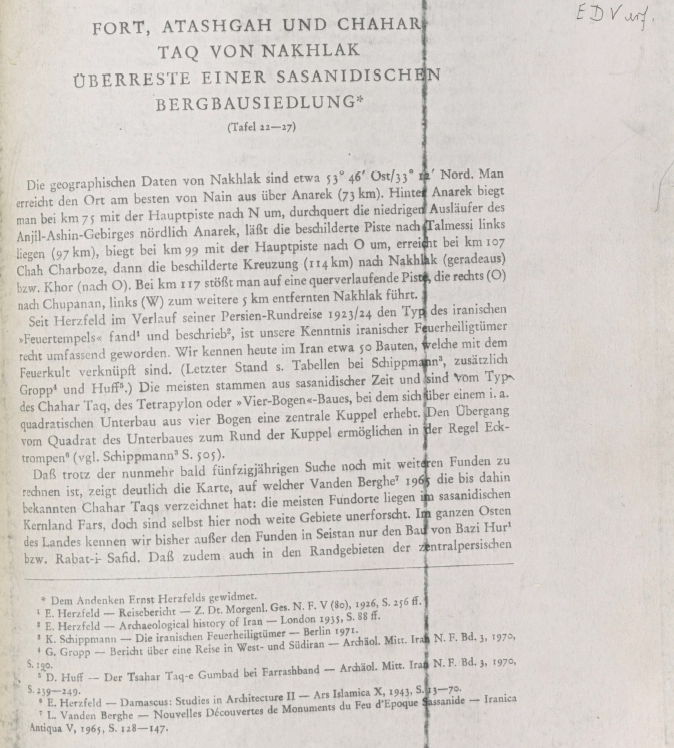 | Hallier, Ulrich W.: Fort, Atashgah und Chahar Taq von Nakhlak, Überreste einer Sasanidischen Bergbausiedlung. In: Archäologische Mitteilungen aus Iran, vol. N.F. 5, pp. 285-307, 1972. (Type: Journal Article | BibTeX | Tags: Mining, Sasanian)@article{nokey, |
Hallier, Ulrich W.: Fort, Atashgah und Chahar Taq von Nakhlak, Überreste einer sasanidischen Bergbausiedlung. In: Archäologische Mitteilungen aus Iran, vol. 5, pp. 285-307, 1972. (Type: Journal Article | BibTeX | Tags: Mining)@article{nokey, | |
1950 |
|
 | Brown, T. B.: Ancient Mining and Metallurgy Committee, Second Report: Iron Objects from Azarbaijan. In: Man, Royal Anthropological Institute of Great Britain and Ireland, vol. 50, no. 3, pp. 7-9, 1950. (Type: Journal Article | Links | BibTeX | Tags: Archaeometallurgy, Azerbaijan, Iron, Mining)@article{nokey, |
1907 |
|
 | Freise, Fr.: Geographische Verbreitung und wirtschaftliche Entwicklung des Bergbaus in Vorder- und Mittelasien während des Altertums. In: Zeitschrift für praktische Geologie, vol. 15, pp. 101-117, 1907. (Type: Journal Article | BibTeX | Tags: Archaeometallurgy, Metal Resources, Mining, Resources)@article{nokey, |
Freise, Fr.: Geographische Verbreitung und wirtschaftliche Entwicklung des Bergbaus in Vorder- und Mittelasien während des Altertums. In: Zeitschrift für praktische Geologie, vol. 15, no. 4, pp. 101-117, 1907. (Type: Journal Article | BibTeX | Tags: Mining)@article{nokey, | |
1899 |
|
Winklehner, Hans: Schürfungen in Persien. In: Österreichische Zeitschrift für Berg- und Hüttenwesen, vol. 47, pp. 629–633; 645–649, 1899. (Type: Journal Article | BibTeX | Tags: Mining)@article{nokey, | |
1898 |
|
 | Helmhacker, R.: Die nutzbaren Lagerstätten Persiens. In: Zeitschrift für praktische Geologie, vol. 6, pp. 430-432, 1898. (Type: Journal Article | BibTeX | Tags: Archaeometallurgy, Metal Resources, Mining, Resources)@article{nokey, |
1895 |
|
Mactear, James: Some notes on Persian mining and metallurgy. In: Transactions of the Institution of Mining and Metallurgy, vol. 3, pp. 2-39, 1895. (Type: Journal Article | BibTeX | Tags: Archaeometallurgy, Mining)@article{nokey, | |
1888 |
|
Toqué, M.: Mines de turqouises de Nichapour, province de Khoraçan. (Perse). In: vol. 13, pp. 563-577, 1888. (Type: Journal Article | Links | BibTeX | Tags: Mining, Resources)@article{nokey, | |
1884 |
|
 | Schindler, Hootum: The Turquoise Mines of Nishapur, Khorassan. In: Records of the Geological Survey of India, vol. 17, pp. 132-142, 1884. (Type: Journal Article | BibTeX | Tags: Mining)@article{nokey, |
1840 |
|
Robertson, James: An account of the iron mines of Caradogh, near Tabreez in Persia, and of the method there practised of producing malleable-iron by a single process directly from the ore. In: Transactions of the Royal Society of Edinburgh, vol. 14, pp. 699-707, 1840. (Type: Journal Article | Links | BibTeX | Tags: Metal Resources, Mining, Resources)@article{nokey, | |
